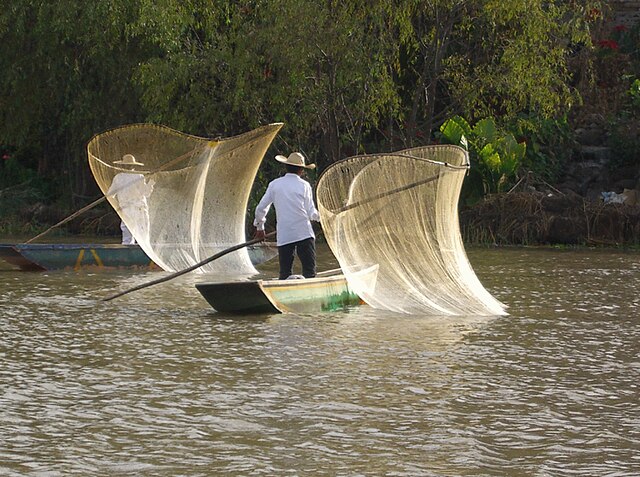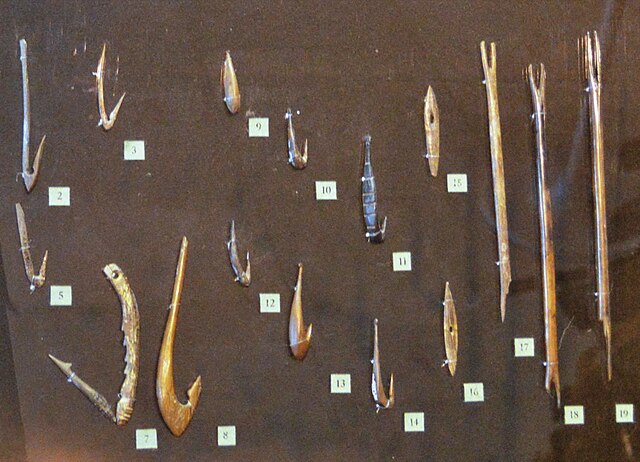Cormorant fishing is a traditional fishing technique in which fishermen use trained cormorants to catch fish in rivers. Historically, cormorant fishing has taken place in China and Japan, as well as Greece, North Macedonia, and briefly, England and France. Sometimes known simply as "Duck Fishing," it was attested as a method used by the ancient Japanese in the Book of Sui, the official history of the Sui Dynasty of China, completed in 636 CE. Though cormorant fishing once was a successful enterprise, its primary use today is to serve the tourism industry. This artisan fishing method is no longer used anywhere except southwestern China, where it is also under threat from competition from more modern methods.
Yangshuo cormorant fisherman
Chinese cormorant fisherman in Yangshuo
Great cormorants are typically used by Chinese fishers
Chinese fisherman with his cormorants
Fishing is the activity of trying to catch fish. Fish are often caught as wildlife from the natural environment, but may also be caught from stocked bodies of water such as ponds, canals, park wetlands and reservoirs. Fishing techniques include hand-gathering, spearing, netting, angling, shooting and trapping, as well as more destructive and often illegal techniques such as electrocution, blasting and poisoning.
Stilts fishermen, Sri Lanka
Fishing with nets, Mexico
Fishing tools from the Mesolithic and Neolithic period
Painting of A Brixham trawler by William Adolphus Knell. The painting is now in the National Maritime Museum.








